Accomplishments
For a full list of Tom's accomplishments: click here.
Resume
For a full professional resume click here.
Tom's Sketches
To see some of Tom's sketches: click here.
Growing Up Years
Tom Butt was born in Albuquerque, New Mexico, in 1944 just before
his father departed for France in World War II. He grew up in Fayetteville, Arkansas, one of three brothers.
Tom’s father,
Judge Thomas F. Butt, served as an Arkansas Chancery and
Probate Judge for 50 years, longer than any other judge in
Arkansas history. He was also a U.S. Army Reserve officer,
rising to the rank of brigadier general and the mobilization
position of Chief Judge, U.S. Army Judiciary. Tom’s mother was a
librarian in the Fayetteville Public Library.
Tom attended public schools in Fayetteville, graduating from high
school in 1962. He participated in Boy Scouts and played baseball,
football and basketball. He enjoyed art, camping, swimming and
fishing. Tom was also a scholar, finishing high school as a
National Merit Scholarship Finalist.
Summers in high school were spent working for the Washington County Highway Department, repairing bridges, patching pavement and laying asphalt.
Education Years
Tom attended the University of Arkansas from 1962 to 1967, graduating with a Bachelor of Arts Degree and a Bachelor of Architecture Degree.
During summers, Tom worked, first, for the U.S. Forest Service on a fire crew in the Kootenai National Forest on Montana. For four more summers he worked as a Student Trainee Architect for the Western Service Center of the National Park Service. He spent two summers in Yellowstone National Park, one summer in Hawaii and one summer in San Francisco.
After two years in the Army and working for two architectural firms, Tom returned to school for a graduate degree, receiving a Master of Architecture in Urban Design from UCLA in 1973.
Military Service
Tom was commissioned a second lieutenant in the U.S. Army Corps of Engineers in 1966 after completing advanced ROTC at the University of Arkansas.
He attended the U.S. Army Engineer Officer Basic Course at Ft. Belvoir, VA, from February to April 1968, and graduated with the MOS (Military Occupation Specialty) Combat Engineer Unit Commander. In April 1968. Butt was assigned to Ft. Polk, LA, where he served the remainder of 1968 as a Basic Combat Training Officer. In late 1968, he was transferred, with other architects and planners, to a special master plan team to help prepare a plan for Ft. Polk to become a permanent military post.
In March, 1969. Lieutenant Butt arrived in Vietnam, where he served the remainder of 1969 and early 1970 with the Operations Section of Headquarters of the 159th Engineer Group at Long Binh. The 159th was part of the 20th Engineer Brigade serving the south half of Vietnam. Under the 159th were three engineer battalions, the 46th, 92nd and 169th, as well as the 100th Bridge Company.
The 159th Engineer Group operated in the area west and south of Saigon and was involved in road and bridge building, construction of fire bases, air bases and cantonment facilities and land clearing. The 159th also operated all the rock quarries in the southern half of Vietnam. Click here for a journal.
Leaving the Army and Vietnam in March of 1970, Butt was awarded the Bronze Star and the Army Commendation Medal as well as the Vietnam Campaign Medal, the RVN Campaign Medal and the National Defense Service Medal.
 
Family
Tom and Shirley Butt were married in 1971 in Muir Woods.
Shirley has an undergraduate degree in mathematics from the University of North Carolina where she was inducted into Phi Beta Kappa. She later received a Master of City Planning Degree from U.C. Berkeley. For several years, she worked as a computer systems analyst independent contractor, and later, she helped manage Interactive Resources.
Shirley has been involved in numerous community affairs, including serving on the Richmond Public Development Review Board, the East Brother Light Station Board of Directors, the Point Molate Restoration Advisory Board (RAB), the Urban Forest Advisory Committee and the General Plan Citizens Advisory Committee.
Tom and Shirley have two sons, Daniel and Andrew.
Andrew attended the University of Arkansas where he received his Bachelor of Architecture degree. He is a licensed architect and is a principal at Interactive Resources. Andrew and Kimberly Martin were married in April of 2001 and live in Richmond. They have two children. Andrew served on the El Cerrito Planning Commission and the Richmond Design Review Board. He was recently appointed to the Richmond Planning Commission. He also heads the Point Richmond Music Committee that puts on the Point Richmond Summer Music Festival.
Kimberly is also an architecture graduate of the University of Arkansas and received a Master Degree in Historic Preservation Architecture from U.C Berkeley. Kimberley works part-time at Interactive Resources and is the 2012 president of PRAM.
Daniel graduated from U.C. Davis with a degree in history and political science. After two years of ski resort work Tahoe, he completed law school and passed the bar examination in 2003 and again in 2011. He is married to Sara Knight, a special education teacher. They have two children and live in Berkeley. Daniel is a license contractor and has been involved in rehabilitating historic buildings.
Community Service
Tom and Shirley Butt moved to Richmond from Marin County in 1973, attracted by the opportunity to live affordably in close proximity to San Francisco Bay. In short order, community activist Lucretia Edwards took Tom under her wing and made sure that he became involved in community affairs. Tom was elected president of the Point Richmond Neighborhood Council, became a charter member of the Richmond Community Development Commission and, later, president of the Point Richmond Business Association.
Tom and Shirley were also attracted by the economic potential of Richmond and the future of the City’s outstanding historic resources and miles of undeveloped shoreline. Between 1975 and 1980, Tom partnered with the late Jim Byers to save and rehabilitate the historic Hotel Mac, turning it into the regional attraction it is today. Tom also headed up the successful effort to nominate Point Richmond to the National Register of Historic Places and worked with the Contra Costa Shoreline Parks Committee and the U.S. Navy to place Point Molate (Winehaven Historic District) on the National Register of Historic Places.
In the late 1970s Tom founded the non-profit corporation that saved East Brother light Station from destruction, restored it and continues to operate and maintain it as public service. East Brother lighthouse is Richmond’s oldest building and is listed on the National Register of Historic Places as well as being a California Registered Historic Landmark. For the full story of East Brother, visit the website http://www.ebls.org/.
In the early 1980s Tom served on the Richmond CETA Advisory Committee, chaired the Richmond Economic Development Commission, served as president of Washington Elementary School PTA, was a board member of the Masquers, chaired the Citizens Advisory Committee on Surplus School Property, chaired the Richmond Beautification Committee and chaired the Mayor’s Ad-Hoc Committee on Santa Fe Railroad and Community Relations.
In the mid-1980s, Tom founded the West Contra Costa Bay Shore Council, which became a major player in Richmond City Council and mayoral campaigns, ultimately changing the course of shoreline land use from industrial to a mixed use of housing, technology, commerce and recreation.
In the late 1980s Tom served on the Citizens Advisory Committees for Richmond Shoreline Conservation and Development Strategy, the Knox Freeway-Cutting Boulevard Corridor Study, and North Richmond Shoreline Specific Plan. At the request of the Richmond Museum Association, Tom donated the services of Interactive Resources to prepare a successful nomination of the Ford Assembly Building to the National Register of Historic Places.
In the early 1990s, Tom was elected president of the Richmond Rotary Club and founded People Do! to make sure that the community would benefit from mitigations of negative impacts from the Chevron Refinery expansion and modernization projects.
When the Richmond Unified School District declared bankruptcy in 1991 and closed the schools six weeks early, Tom successfully sued the State of California to keep the schools open (Thomas K. Butt v. State of California, 4 Cal. 4th 668 (1992). Butt v. State of California, 842 P.2d 1240 (Cal. 1992).The California Supreme Court ruled that the state was responsible for the fundamental educational rights of students and that the state must take action to address a local district's inability to provide an education basically equivalent to that provided by other districts in the state. In so ruling, the Court stated that the California State Constitution makes public education “a fundamental concern of the State and prohibits maintenance and operation of the common public school system in a way which denies basic educational equality to the students of particular districts. The State itself bears the ultimate authority and responsibility to ensure that its district-based system of common schools provides basic equality of educational opportunity.”842 P.2d at 1251.
Tom also assumed chairmanship of Herms District, Boy Scouts of America, served on the board of directors of United Concilio West and provided pro-bono architecture services for the Richmond Rescue Mission.
For his efforts to save the schools, Tom was awarded the West Contra Costa Education Fund Distinguished Citizen Award, and East Brother light Station, garnered the National Trust for Historic Preservation Honor Award and the Department of Transportation Award for Outstanding Public Service to Transportation and Historic Preservation.
Tom was also recognized with the Presidential Award for Outstanding Community Achievement of Vietnam Era Veterans.
Tom is a member of the First United Methodist Church of Point Richmond where he serves on the board of trustees.
In the decade of the 1990’s, Tom turned his community service experience toward political involvement, running for the Richmond City Council in 1993 and missing a seat by a mere 104 votes.
Two years later, in 1995, Tom ran again and placed fourth in a race for five seats, following one of Richmond’s nastiest campaigns where he was the target of numerous hit pieces financed by Darrell Reese, the BMW and Firefighters Local 188. According the West County Times, Local 188 was the campaign’s biggest spender, using over $80,000 to defeat its “enemies,” including Tom Butt.
In 1999, Tom was elected a second time to the Richmond City Council, this time placing number two of the five members elected.
In 2001, Tom ran for mayor, coming in second to Irma Anderson and beating out both Nat Bates and John Marquez. Tom had the lowest campaign cost per vote of any of the candidates.
In 2004, Tom ran for a third term on the City Council, becoming the top vote getter with more votes than anyone ever in a Richmond election.
As a part of city council duties, Tom represents Richmond on the West Contra Costa Transportation Advisory Committee and the Marin Energy Authority. He also serves on the League of California Cities
Environmental Quality Policy Committee, liaison to the Richmond Historic Preservation Advisory Committee and the Design Review Board, the Water Emergency Transit Authority Advisory Committee (WETA) and the League of California Cities Environmental Quality Policy Committee.
With support from Interactive Resources, Tom continues to provide substantial pro bono architecture and engineering services for civic projects in Richmond. For example, he raised over $11 million in grants and tax credits for rehabilitation of the Maritime Child Care Center and provided seven years of pro-bono project management services valued at over $500,000.
Tom serves on the boards of two Richmond-based non-profits, East Brother Light Station, Inc., which operates and maintains the historic lighthouse one-quarter mile off Richmond’s western shore, and Rosie the Riveter Trust which is the non-profit partner of Rosie the Riveter WWII Home Front National Historical Park. He was a founder of Rosie the Riveter Trust and served as president for its first eleven years.
Involvement in organizations that work at a state and national level on issues vital to cities has also been a priority for him. In 2008, he was elected by my peers (members of city councils and county boards of supervisors statewide) as chair of the Local Government Commission and served four years as chair.
Tom also serves as an alternate board member on both BCDC and Contra Costa LAFCO.
Sustainability
Interactive Resources was founded in 1973 during the “first energy crisis” precipitated by a Middle East oil embargo. The original partners of the firm, including founder Tom Butt, plunged into architectural projects that demonstrated innovative ways to save energy.
Some of the first homes in the Bay Area to incorporate active and passive solar energy applications were designed by Tom Butt and his partners at Interactive Resources. This set the pace in California in the years immediately following the energy crisis of 1973, influencing subsequent state energy conservation legislation and speeding the incorporation of energy conservation considerations into the mainstream of California architectural practice.
In 1975, Tom Butt and Interactive Resources organized and implemented the first statewide California Solar Energy for Buildings Conference, repeated in 1976 and 1977 with hundreds of building industry professionals attending.
In 1976, Tom Butt erected at his Point Richmond home the largest wind generator in California and the first to feed power into the PG&E grid. Fully instrumented by PG&E, it became a research project that paved the way for commercial wind power in California.
Until well into the 1980’s Interactive Resources remained a leading consultant in alternative energy applications and energy conservation in building, designing hundreds of projects incorporating passive and active solar heating and cooling, including six U.S. Government-sponsored grants for research or demonstration projects in solar energy, including the AIA Research Corporation Grant (sponsored by HUD) for Phase II Development of Energy Performance Standards for New Builders, 1978, and the Willow Park II Community Center Case Study, a DOE Research Project, 1983.
Tom is a LEED Accredited Professional in Building Design & Construction, and his firm, Interactive Resources, has designed certified LEED buildings.
Business and Professional
Tom began working in the architecture and engineering profession part time in high school, and his first full-time architectural employment in the private sector was with the firm of Edward Durell Stone in Palo Alto in 1967-68 and 1970. He worked for a short time for the firm of Mayhew & Thiederman designing Kaiser hospitals before going to graduate school at UCLA in 1971.
Tom Butt is one of the founders and president of Interactive Resources, an architecture, engineering, and planning consulting firm located in Richmond since 1973. For the past 39 years, Interactive Resources has been the largest firm of its type in West Contra Costa County.
Tom is the only member of the Richmond City Council who owns and runs a business with employees, and he is the only one with a business located in Richmond.
The original concept of the firm’s founders was to create a tightly-knit, multidisciplinary, full-service organization – hence the name “Interactive Resources.” Today, the organization lives up to that name, providing architecture, interior design, planning, civil engineering and structural engineering services in-house. In addition, long time relationships with dozens of specialty consultants make Interactive Resources one of the most diversified firms of its size in the entire Bay Area.
Tom is licensed as an architect in several states and as a general contractor in California. He has been previously licensed as a real estate broker in California and has substantial education and experience in real estate development and real estate economics.
In his professional career, Tom continues to pursue multiple interests, all of which have served him well as background for his work on the Richmond City Council.
Architectural Design
Tom Butt has served as the principal in charge or project architect for a large number of building projects throughout the Bay Area and California. Local examples include the Point Richmond Tech Center I, the Richmond PG &E Service Center, Mariner Square, Baltic Square and alterations to the Social Security Federal Building.
Other recent Bay Area projects include visitor facilities at Stag’s Leap Wine Cellars in Napa and Beringer Winery in St. Helena, seismic retrofit of four classroom buildings at the College of San Mateo and the Margaret Lesher Student Union building at Diablo Valley College.
Tom Butt is a recognized expert in the field of building diagnostics -- the art and science of investigating building problems and failures, such as leaks, structural collapse, mold damage, wood decay and water vapor damage. Many diagnostic assignments are related to construction defect litigation, and Tom has served as an expert witness on hundreds of such cases. Interactive Resources not only provides the investigation of construction defects; the firm often provides the design and construction administration for repairs.
Tom has written numerous articles on construction technology and has authored or co-authored a number of national construction standards under the auspices of ASTM (American Society for Testing and Materials), where he serves on several committees and choirs several task groups.
Historic Preservation
Tom Butt continues a long interest in historic preservation. With Tom as principal in charge or project manager, Interactive Resources has completed more than 100 projects involving restoration or rehabilitation of historic structures, many of which are listed on the National Register of Historic Places.
Tom has lectured widely on historic preservation practice to groups including the National Trust for Historic Preservation Annual Convention, the Monterey Design Conference, and many civic clubs and organizations.
Under Tom’s direction, Interactive Resources has prepared and administered numerous successful grant applications for historic preservation projects and National Register Nominations.
Real Estate Development
Tom has always been fascinated by the concept of “architect as developer” as a way of way of controlling the quality and design of a project.
At UCLA, Tom’s master’s thesis explored the relationship between design and real estate economics, and his thesis committee included a representative from both the Graduate School of Management and the School of Architecture and Urban Planning.
Tom also completed the coursework for and obtained a California real estate broker’s license in order to learn more about the dynamics of the real estate marketplace.
In the late 1970s, Tom joined with the late Jim Byers to purchase the burned out shell of the Hotel Mac and restore it to become a Richmond landmark. Tom was both architect and general contractor for the project.
More recently, Tom has been both the architect and Development project manager for two commercial projects in Point Richmond.
Recreation and Relaxation
Tom and Shirley both prefer outdoor activities, including hiking and backpacking, canoeing and gardening. For many summers, they have hiked and camped in the Sierra Nevada and the Rocky Mountains, including the Yellowstone Park back country, where Tom worked summers during his college years.
They have traveled to Europe, Asia and New Zealand. In 2009, they traveled to Vietnam, Cambodia and Thailand, revisiting many locations familiar to Tom from his Vietnam service in 1968-70.
Tom takes advantage of vacations to do pen and ink sketches. Click here for collection of over 100 sketches.
Shirley is a member of the Richmond Garden Club and paints with watercolors as a hobby.
Because of the high fire hazards in the Point Richmond hills where they live, the Butts have acquired a small herd of goats and sheep to keep the brush down. For several years, Tom milked the goats and produced a very popular goat cheese, but that proved to be too consuming an activity.
Tom also maintains a vegetable garden and keeps bees, producing a fine Nicholl Knob mixed herb honey.
| |
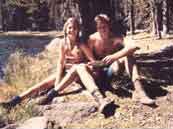 |
|
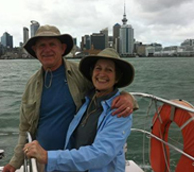 |
|
|
| |
Tom and Shirley backpacking in 1971 |
|
New Zealand in 2012 |
|
|
|
| |
|
|
|
|
|
|
| |
|
|
|
|
|
|
|
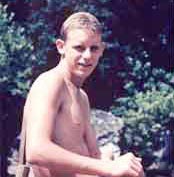 |
Lifeguard at Boy Scout Camp 1958 |
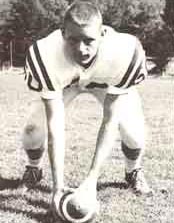 |
Fayetteville High School Football 1960-61 |
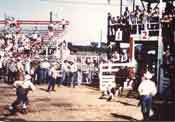 |
Tom in his first and last attempt at
bull riding |
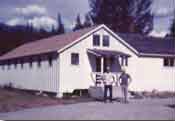 |
In 1962, Tom worked on a fire crew
in the Kootenai National Forest
in Montana |
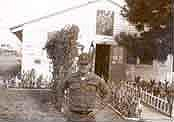 |
1968-69 - Basic Combat Training Officer, Ft. Polk, LA |
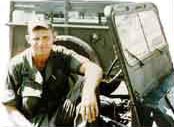
|
1969-70 1st Lt. Butt
Long Binh, Vietnam 1969 |
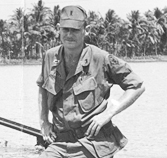 |
1969, 1st Lt. Butt at the Phu Cuong Bridge reconstructed by Army Engineers |
 |
Road building on QL-20, Vietnam 1969 |
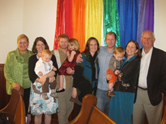 |
| Tom and family |
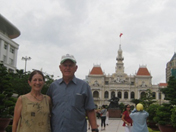 |
Tom & Shirley at Ho Chi Minh City, 2009 |
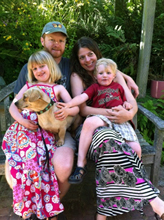 |
Andrew, Kim Butt and family |
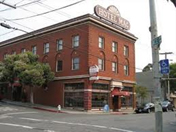 |
Tom headed the effort to designate Point Richmond as Historic District on the National Register of Historic Places and rehabilitated the Hotel Mac |
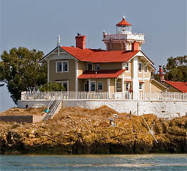 |
Received the U.S. Coast Guard Meritorious Public Service Award, the Coast Guard’s second highest civilian medal for restoring East Brother Lighthouse |
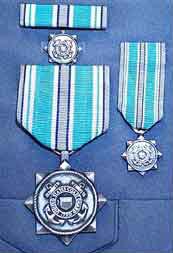 |
For saving and restoring East Brother Lighthouse, Tom Butt earned
the U.S. Coast Guard Meritorious Public Service Award |
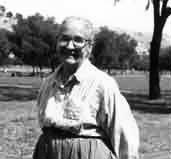 |
The late Lucretia Edwards mentored
Tom in public service |
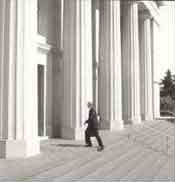 |
When the Richmond Unified School District declared bankruptcy in 1991 and closed
the schools six weeks early, Tom
successfully sued the State of California
to keep the schools open |
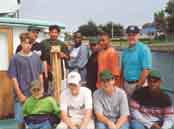 |
Tom chaired Herms District, Boy
Scouts of America |
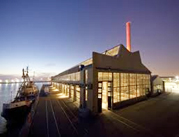 |
Tom nominated the Ford Building to the National Register of Historic Places |
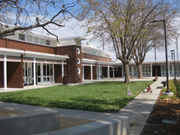 |
As president of Rosie the Riveter Trust, Tom provided pro bono services to project manage the Maritime Center rehabilitation and raise $11 million for the effort |
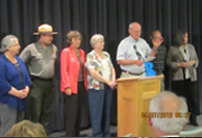 |
The Maritime Center won a Richmond Historic Preservation Award |
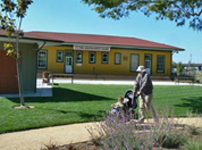 |
Tom conceived the complex land acquisition and provided pro-bono architecture and engineering services that made possible the rehabilitation of the Trainmaster Building (now Point Richmond Mechanics Bank) |
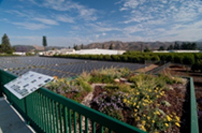 |
Limoneira solar farm in Ventura County
was awarded LEED Gold |
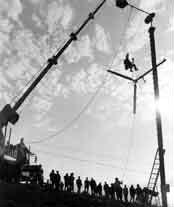 |
1976 Wind Generator in Point Richmond largest is California and first to fed into
the electrical grid |
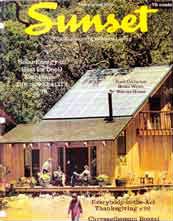 |
Solar home designed by Interactive Resources featured in 1976
Sunset |
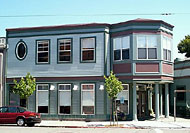 |
Interactive Resources was the architect and, in conjunction
with RDC, developer of Mariner Square in Richmond, CA |
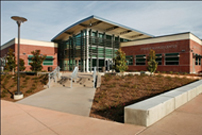 |
Contra Costa College New Student
Services Center |
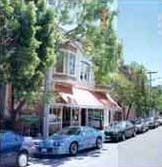 |
| |
 |
Point Richmond Tech Center I
For nearly 10 years, this was the
home of Pixar |
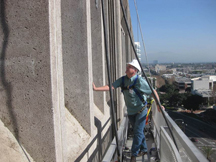 |
Tom evaluating façade damage at the
Santa Ana Federal Building 2012 |
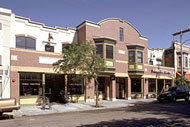 |
Baltic Square in Point Richmond was designed by Interactive Resources and developed by Interactive Resources and RDA |
 |
Mixed herb honey |
|

